[notes on looking for beans in Qianjie] A rare variety, Pink Bourbon, Ramesita Manor, Colombia

Professional coffee knowledge exchange more coffee bean information please follow the coffee workshop (Wechat official account cafe_style)
Colombia Huila Finca La Mesita
Colombian Huilan La Mesita Manor
Country: Colombia
Producing area: Huilan
Manor: Latin American Sita Manor
Altitude: 1760m
Variety: pink bourbon
Treatment: semi-washing
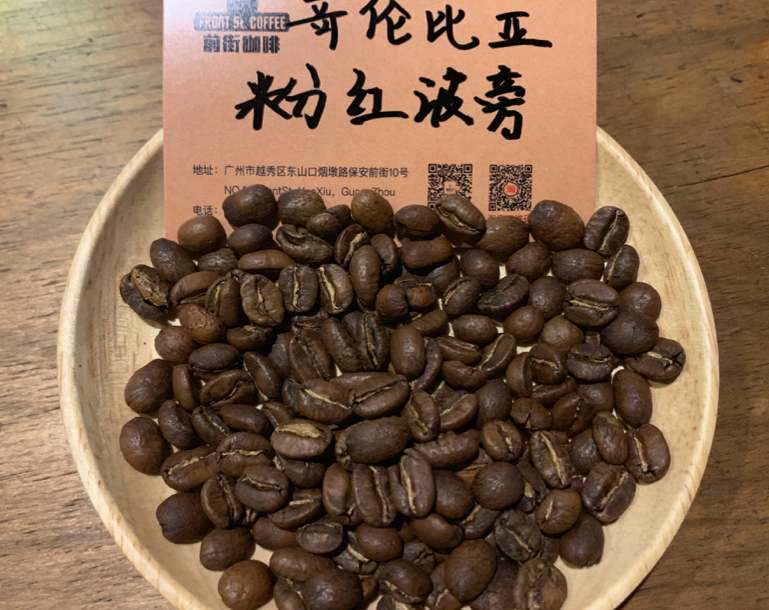
| | Colombia |
Colombia is the world's third largest exporter of coffee, mainly producing Arabica coffee and the largest exporter of Arabica beans. Colombia is rich in products, especially coffee, flowers, gold and emeralds are known as the "four treasures".
Colombia is located in the northwest of the South American continent, bordering Central America and Panama. From the aerial view, it looks like it has been scratched by a cat on the west side, leaving three vertical paw marks from north to south. The country's famous producing areas are scattered in the Andes with fertile volcanic soil.
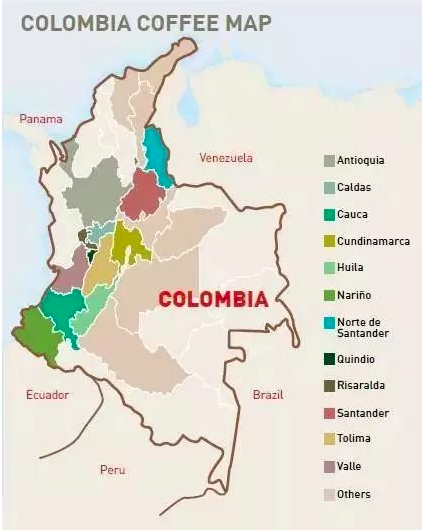
Coffee cultivation in Colombia is mainly in the form of small farms. There are more than 300,000 coffee farms in the country, with a planting area of 1.07 million hectares. 30 to 40 per cent of the rural population depends directly on coffee production.
Colombian coffee is generally grown at a high altitude of more than 1300 meters in the Andes, and tall trees such as banana trees are mixed in plantations to shield coffee trees from the sun. The coffee grown by the local people is very fine, and the coffee produced is smooth and balanced, with a fresh smell, ranging from average commercial beans to outstanding boutique coffee.
Because Colombian coffee is generally of high quality and guaranteed quality, the region has adopted a hideously simple grading system, with only two grades-selective Supremo and preferred Extra. In addition, round beans with a probability of about 5% are singled out, called Peaberry or Peabean. If buyers seek commercial coffee instead of individual items, Colombians will mix selected and preferred beans in a certain proportion, which is called Excelso.
| Huilan production area
Huilan province is located in western Colombia, where the Andes form a narrow canyon, where coffee grows on the slopes, and it is also a well-known coffee-producing area in Colombia.
Coffee in Huilan Province has a well-balanced and warm flavor because of its rich volcanic soil, moderate rainfall and high-altitude microclimate. It is mostly produced by small farmers, and about 80% of the producers in the region grow coffee on less than 3 hectares of land. Because most of the work is taken care of by small farmers themselves, the labour force is rarely outsourced, so farms can be managed more thoroughly and intensively and coffee beans can be processed.
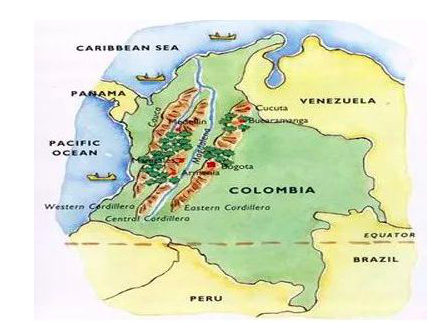
Huilan coffee has a strong taste, heavy texture, with nuts, chocolate and caramel and other aromas and suitable acidity can be called high-quality coffee.
| | Variety introduction |
Bourbon coffee is the same old coffee as Typica coffee, which belongs to Arabica coffee. Bourbon coffee was originally grown in Reunion, which was also known as le Bourbon Island before 1789, so the coffee variety was also named "bourbon (Bourbon)".
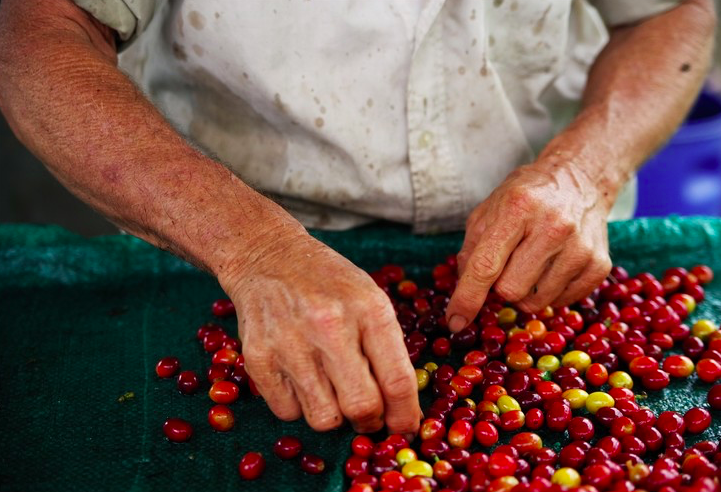
With the same old variety of coffee beans, unlike the tin card species, the leaves of the bourbon species are wider, the growth is denser, and the yield of coffee is higher than that of the tin card. Coffee bean particles are large in shape, uniform in size, uniform in color, and bright red when green fruits are ripe.
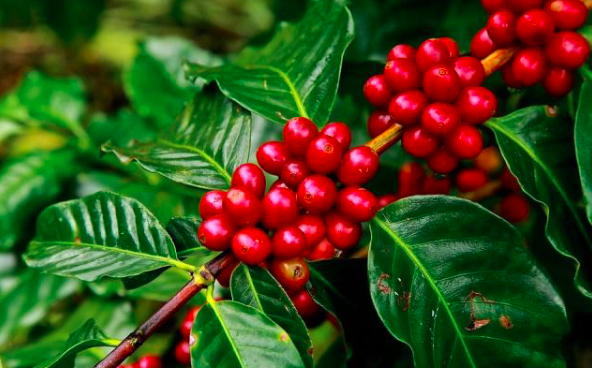
The output of bourbon coffee is nearly 30% higher than that of tin card, but the overall yield is still low among many coffee beans and is also vulnerable to rust leaf disease.
Most of the bourbon fruit is red, but two natural varieties show different colors, orange bourbon and yellow bourbon, while this pink bourbon is a hybrid of red bourbon and yellow bourbon.
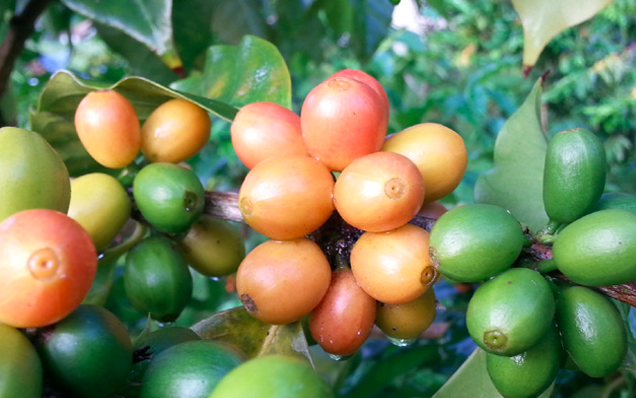
Pink bourbon, as its name implies, its coffee cherries are romantic pink when ripe. Is a very rare new variety, the reason why pink bourbon is rare, mainly because it is difficult to maintain this beautiful pink, sometimes harvest some orange bourbon, that is because the color of coffee fruit is ultimately determined by the recessive genes in pollen grains. Among the pollen grains we selected for hybridization, there are both yellow genes inclined to yellow bourbon and red genes inclined to red bourbon, and these are recessive genes, which are very easy to interfere with each other.
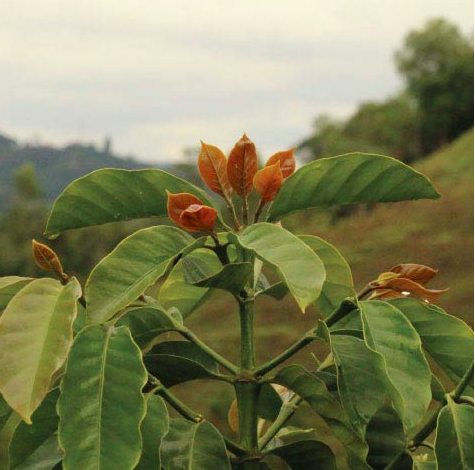
It is said that the pink bourbon was first produced in the Huilan region, and one called Gabriel Casta? O's coffee farmers first planted, at the beginning is mixed with other bourbon, kadura, later picked separately, treated separately, and its cup performance is also very special, different from the general bourbon flavor characteristics, bourbon powder in acid, flavor more citrus berry complex performance.
| approach
Semi-washing method is to first remove the fruit through the sink defects and impurities, and then remove the peel pulp and part of the colloid layer, and then wash for 1 hour, but due to the short soaking fermentation time, pectin is not easy to wash away, there are still pectin residues on the bean shell, at this time, the sticky beans with shell are spread in the sun field to dry. Therefore, the coffee produced by this semi-washing process contains the characteristics of both washing and drying methods.
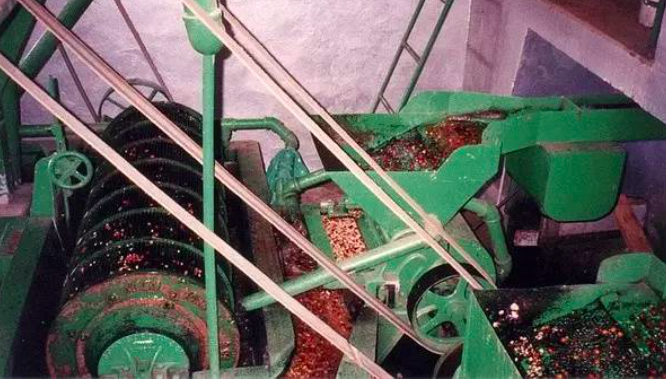
The acidity, sweetness, flavor, and aroma of semi-washed coffee are quite good, but the disadvantage is that the coffee taste is not as strong as that of coffee produced by pure drying or washing.
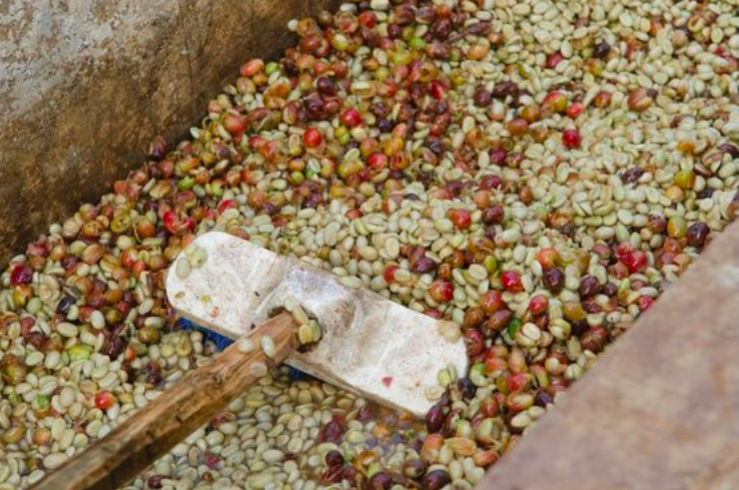
The origin of the semi-washing method is that washing consumes too much water. on average, it takes 10 to 20 tons of water per ton of coffee fruit to produce about 200 kilograms of coffee beans, which the producing countries that do not have rich water resources cannot afford. After 1990, taking advantage of the unique dry climate, Brazil invented the natural pectin removal method, that is, half-washing method or half-sun method.
| | Curve analysis |
Considering that this bean is the bean of the new season this year, the bean is hard and has enough water content, so the Qianjie baker uses medium and low heat to prolong the dehydration time of the bean.
Roaster Yangjia 800N (baking capacity 300g)
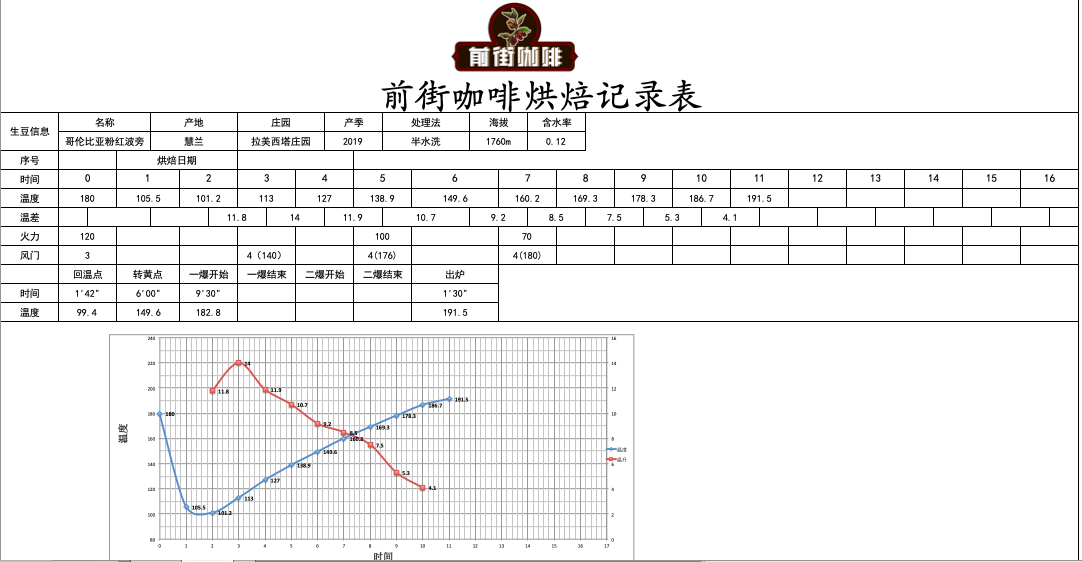
When the furnace temperature reaches 180℃, enter the pot, open the damper 3, and the fire power is 120; the temperature returning point is 142 ", the fire power is unchanged when the furnace temperature is 140℃, and the damper is opened to 4; at this time, the bean surface turns yellow, the grass smell completely disappears, and enters the dehydration stage. When the fire power is reduced to 100 at 176℃, the fire power is reduced to 70 at 180℃, and the damper remains unchanged.
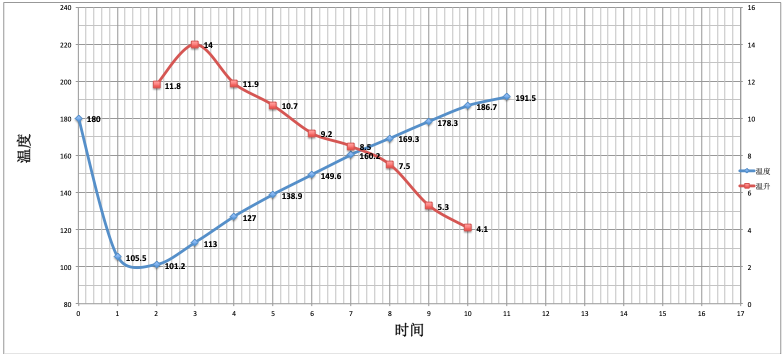
The smell of toasted bread has obviously changed to the smell of coffee, which can be defined as a prelude to an explosion. At this time, it is necessary to listen carefully to the sound of the explosion point. When the sound of the explosion starts, adjust the throttle to 5 (the tuning power should be very careful and not be so small that there is no burst sound). After an explosion, the development of 1 cup 39th 30 ", 191.5 ℃ into the pot.
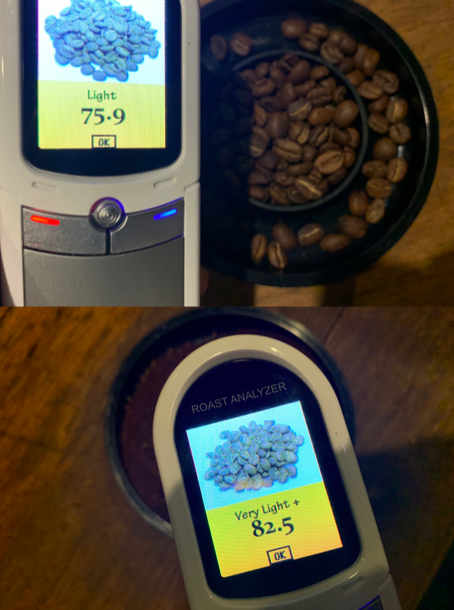
Agtron bean color value 75.9 (top picture), Agtron pink value (bottom picture) 82.5 Magi Roast Delta value 6.6.
| | Cup mapping |
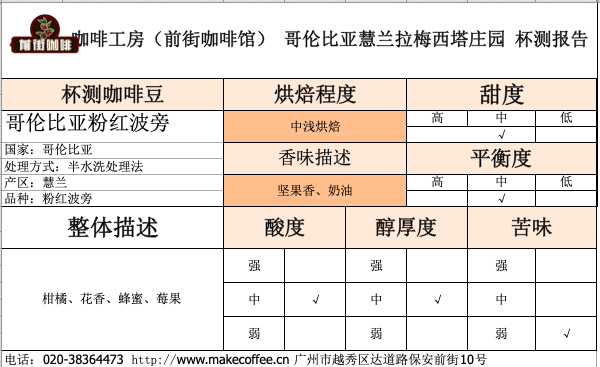
Flavor: citrus, floral, honey, berries.
| | Cooking |
Qianjie Coffee sharing brewing parameters
Recommended cooking method: hand flushing
Filter cup: Hario V60
Water temperature: 90 ℃
Amount of powder: 15g
Powder / water ratio: 1:15
Degree of grinding: medium fine grinding (BG 6k: pass rate of Chinese standard No. 20 screen 58%)
Cooking technique: stage-by-stage extraction
Steam with 34 grams of water for 35 seconds, small water flow around the circle to 127 grams for stages, when the water level is about to expose the powder bed, continue to inject water to 240 grams to stop injection, and so on when the water level drop is about to expose the powder bed, remove the filter cup, (the time of steaming starts) the extraction time is 2 minutes 39 percent 00 ".
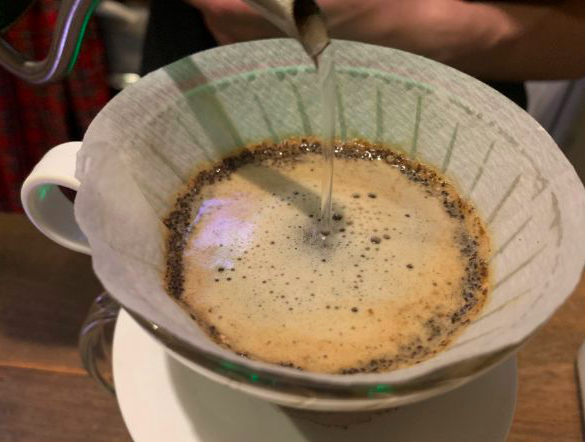
Flavor description: it smells nutty and creamy, with caramel, cocoa in the mouth, acidity of lemon and aroma of berries as the temperature changes, which is well balanced and smooth.
Important Notice :
前街咖啡 FrontStreet Coffee has moved to new addredd:
FrontStreet Coffee Address: 315,Donghua East Road,GuangZhou
Tel:020 38364473
- Prev
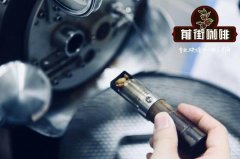
Huakui Fruit Flavor treated with Black Honey in Yegashifi Sidamo, Ethiopia
Professional coffee knowledge exchange more coffee bean information please pay attention to the coffee workshop (Wechat official account cafe_style) Sakuran also has a wealth of passion fruit, peach, berries and other characteristics, the taste is delicious, unforgettable after trying. Only the sun-tanned coffee beans produced by Buku Abel in Hambella production area is the real Sakuran. At present, there are nearly 20 processing plants in Hambella production area.
- Next
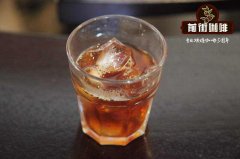
Grapefruit honey Guji Ethiopia Ye Jia Xue Fei washed G1 fine coffee beans fruit flavor
Professional coffee knowledge exchange More coffee bean information Please pay attention to coffee workshop (Weixin Official Accounts cafe_style) Ethiopia is widely regarded as the origin of coffee, and now it is greatly valued in the fine coffee industry. Coffee beans from Ethiopia have become a must-have item on the menu of coffee shops around the world. Why are Ethiopian beans treated so highly?
Related
- Detailed explanation of Jadeite planting Land in Panamanian Jadeite Manor introduction to the grading system of Jadeite competitive bidding, Red bid, Green bid and Rose Summer
- Story of Coffee planting in Brenka region of Costa Rica Stonehenge Manor anaerobic heavy honey treatment of flavor mouth
- What's on the barrel of Blue Mountain Coffee beans?
- Can American coffee also pull flowers? How to use hot American style to pull out a good-looking pattern?
- Can you make a cold extract with coffee beans? What is the right proportion for cold-extracted coffee formula?
- Indonesian PWN Gold Mandrine Coffee Origin Features Flavor How to Chong? Mandolin coffee is American.
- A brief introduction to the flavor characteristics of Brazilian yellow bourbon coffee beans
- What is the effect of different water quality on the flavor of cold-extracted coffee? What kind of water is best for brewing coffee?
- Why do you think of Rose Summer whenever you mention Panamanian coffee?
- Introduction to the characteristics of authentic blue mountain coffee bean producing areas? What is the CIB Coffee Authority in Jamaica?

